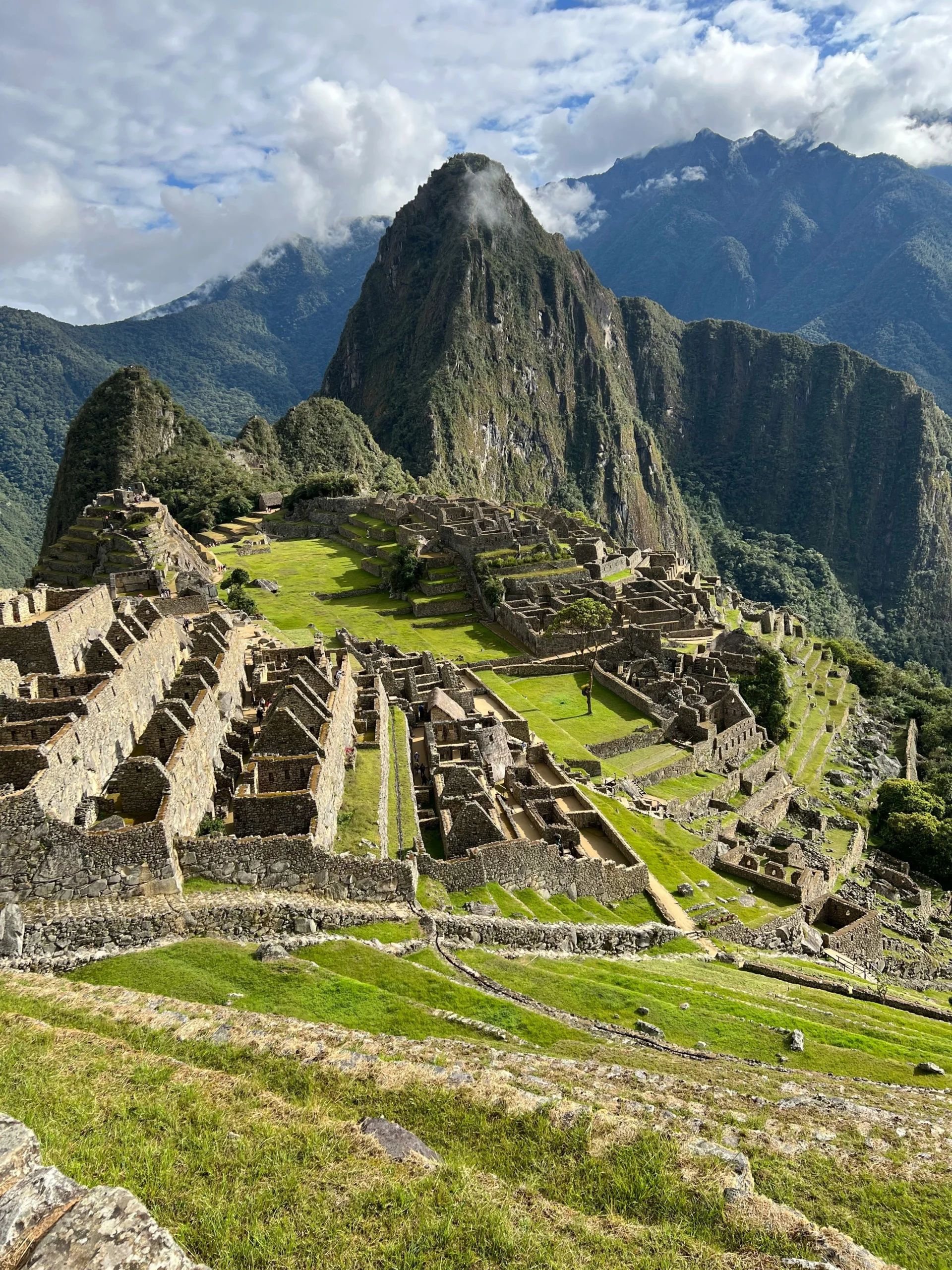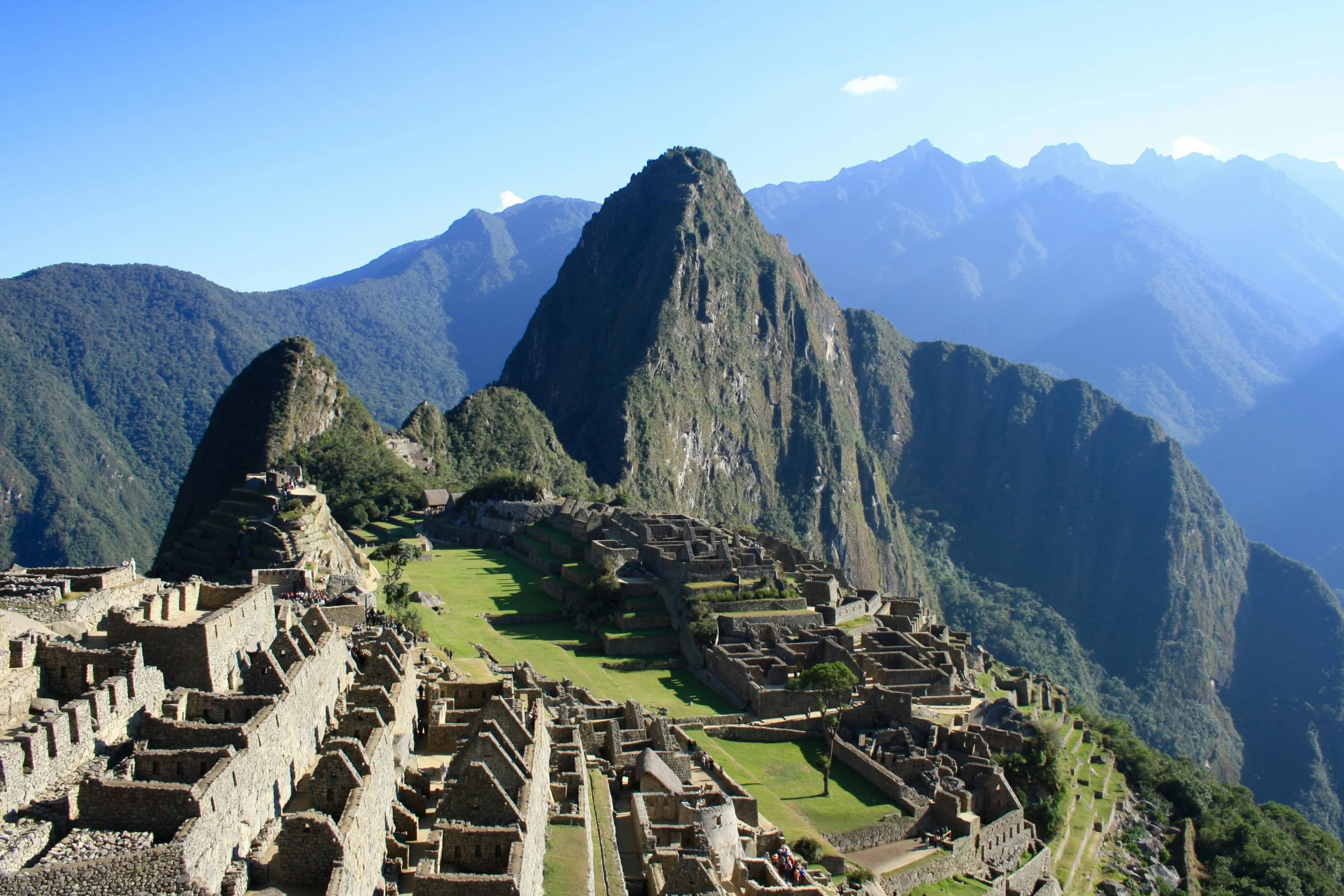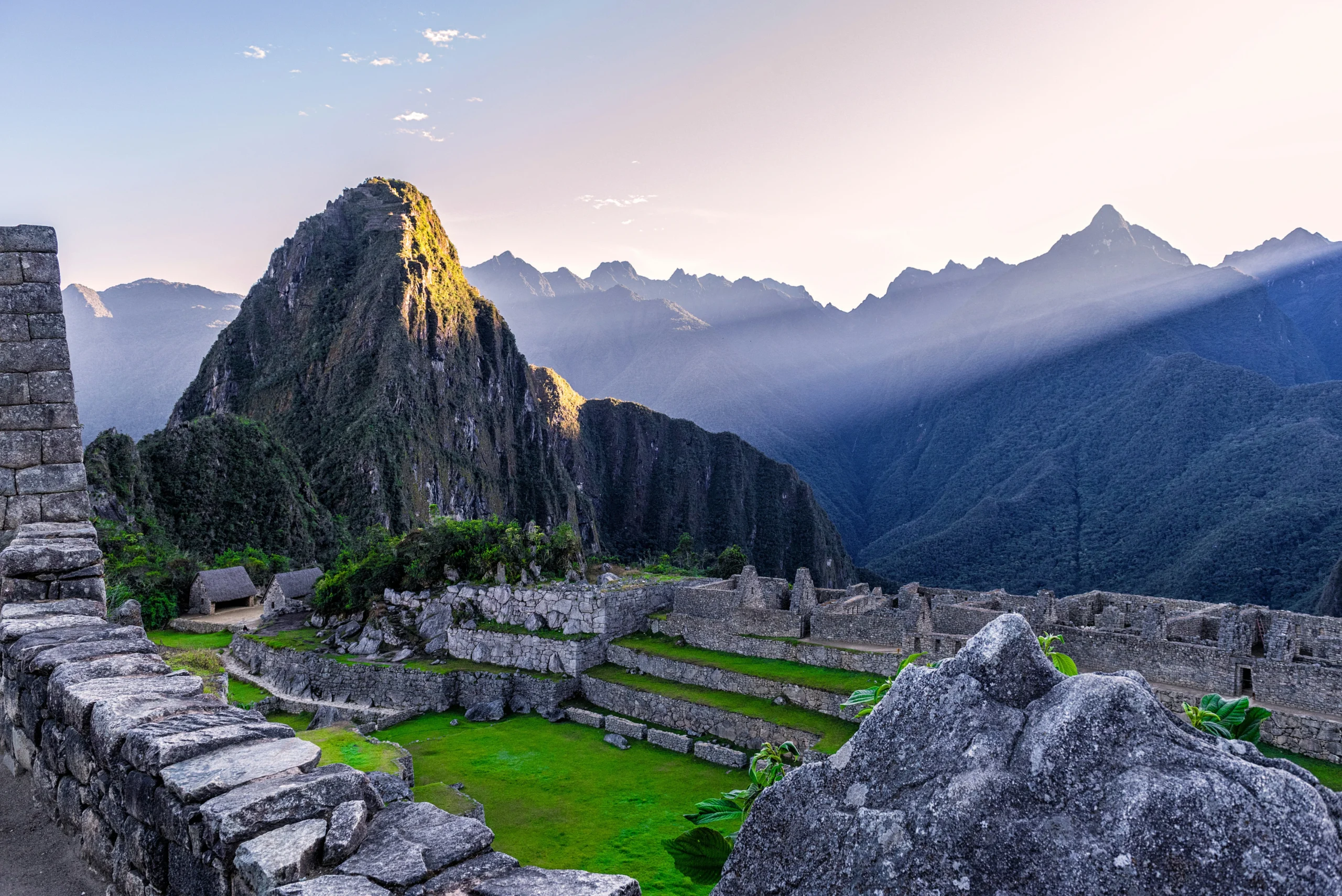Machu Picchu in Peru remains one of the most awe-inspiring destinations on the planet, where history and nature come together in a truly remarkable way. Whether you’re drawn to the mysteries of the ancient Incan civilisation or simply mesmerised by the breathtaking views of the Andes mountains, visiting Machu Picchu, Peru, is an experience that will stay with you forever.
Machu Picchu is a 15th-century Inca citadel or fortified town that remains, to date, as one of the greatest icons of the Inca Empire.
But to get the most out of your experience, some thoughtful planning goes a long way. Given the site’s limited visitor capacity and its remote location nestled high in the Andes, planning a trip to Machu Picchu requires some preparation. Whether you are travelling solo or with family and friends, this guide will walk you through essential tips to make your visit smooth, enjoyable, and hassle-free.

Best Time To Visit: Weather and Crowds
Choosing the best time to go to Machu Picchu makes a big difference in how you experience the site. The dry season, which is from May to September, remains the most popular time for travel. You’ll enjoy clear skies and mild temperatures, perfect for hiking and photography. However, this is also the busiest period, so prepare for crowds.
If you’re hoping for a quieter experience, April and October are ideal shoulder months. These months still fall outside the rainy season and come with fewer tourists and more flexibility in ticket availability. The best time to go to Machu Picchu also depends on your tolerance for rain, because from November to March, it gets wetter. That said, the early morning mist and fewer crowds give the site a magical, mystical feel.
In short, if you’re planning a trip to Machu Picchu, and weather is your top priority, the best time to go to Machu Picchu is between May and early September. If avoiding crowds is more important, April and October offer a great balance.
Plan Ahead: Tickets and Timing
One of the most important things to prioritise when planning a trip to Machu Picchu is securing your entry tickets well in advance. Since the Peruvian government limits daily visitors to protect this historic archaeological site, Machu Picchu entrance tickets tend to sell out quickly, especially during high season. Booking months ahead is the best bet to ensure entry and avoid any last-minute surprises.
In 2025, all visitors must select a specific time slot and circuit when booking their Machu Picchu entrance tickets. There are four circuits designed to manage crowd flow, and each offers a different perspective of the ruins. Be sure to read up on them before choosing the one that suits your interests best.
The safest option for booking is still the official Peruvian government website or authorised vendors. This way, you can be sure your ticket is legitimate and even choose from extra activities, like a guided Machu Picchu tour, a hike up Huayna Picchu, or entry to Machu Picchu Mountain; each requiring separate tickets. Also, you must have some patience with the website, as it is in Spanish and tends to break down if you translate it. I would recommend using Google Translate separately on a different device.
However, you can also book your tickets offline at Cusco or Aguas Calientes. At the Machu Picchu Cultural Centre in Aguas Calientes, you can buy the tickets only with cash. So, make sure that you have cash withdrawn from Cusco, or just get your tickets from Cusco.
Getting To Machu Picchu: Your Travel Options

Getting to Machu Picchu is half the adventure and can be adapted to your preferences and budget. Most travellers begin their journey in Cusco, the former capital of the Inca Empire. It is also the tourist capital of Peru. Therefore, you do not have to worry about getting to Cusco (whether by flight or by road), from wherever you are. You can stay in Cusco for a day or two to acclimatise to the elevation before heading towards Aguas Calientes.
From there, one of the most scenic options is the train to Aguas Calientes (also known as Machu Picchu Pueblo), the closest town to the ruins. PeruRail and IncaRail offer various train classes, from budget to luxury, giving you plenty of choice. In 2025, advance booking is more important than ever due to capacity limits during high season.
Once you arrive in Aguas Calientes, a 25-minute bus ride takes you up a winding mountain road to the entrance of Machu Picchu, Peru. Buses start running as early as 5:30 AM, and it’s worth catching an early one to enjoy the sunrise if you’ve booked a morning slot. If you are joining a tour group, most tours will include a return journey to Aguas Calientes from Machu Picchu, but it is a better idea to double-check to avoid any surprises. If your tour does not include a return bus ride, make sure to get the ticket.
Alternatively, for the adventurous at heart, consider trekking. The classic Inca Trail is a 4-day hike that requires a separate permit, which also sells out months in advance. There are alternative treks like the Salkantay and Lares routes, which are equally stunning and often less crowded.
If you’re booking your journey as part of Peru package tours, make sure it includes transport to and from Aguas Calientes, your guided tour of Machu Picchu, and any add-ons like hikes or entry to additional sites.
Understanding the Machu Picchu Circuits
This is probably one of the most important things to know if you are planning your trip to Machu Picchu. The Peruvian government continues to enforce a circuit-based system to preserve the sanctity of Machu Picchu, Peru, while improving crowd management. So when you’re planning a trip to Machu Picchu, you’ll need to pick one of the four available circuits while booking your Machu Picchu entrance tickets. Each circuit takes you along a fixed one-way route and offers access to different parts of the site.
Circuit 1 – Panoramic Views, Limited Access to Ruins
This route includes the upper terraces where you’ll get the classic panoramic view of Machu Picchu, Peru. From here, you head down through the lower section, skipping key features like the Sacred Rock or Intihuatana. If your goal is mostly photography and iconic views, this circuit delivers. It can also be paired with the short hike to the Inca Bridge.
Circuit 2 – Full Coverage of the Main Site
Circuit 2 is perfect for those who want the most complete experience without mountain hikes. You’ll cover both upper and lower areas, including the Intihuatana, Sacred Plaza, Temple of the Three Windows, and more. This circuit also includes the famous Machu Picchu viewpoint and can be combined with the Inca Bridge. For first-timers planning a trip to Machu Picchu, this is often the most recommended option.
Circuit 3 – Lower Circuit with Access to Machu Picchu Mountain
This one gives access to the lower parts of the site, including highlights like the Inka House, Temple of the Sun, the Water Mirrors, and the agricultural terraces. You won’t get the upper platform view, but if you’re aiming to hike Machu Picchu Mountain, this is the circuit to go for. It allows one re-entry, which is great if you want to rest between the ruins and the hike.
Circuit 4 – Lower Circuit with Optional Hike to Huchuy Picchu
Circuit 4 is similar to Circuit 3 in that it covers the lower archaeological area. But the bonus here is that you can hike Huchuy Picchu, a short but rewarding climb that offers stunning views without the intensity of Huayna Picchu or Machu Picchu Mountain. This circuit includes structures like the Water Mirrors and the Sacred Rock, and is ideal for those looking for a lighter adventure with scenic payoff. If you’re short on time or energy but still want a sense of achievement, Circuit 4 is a great pick.
Quick Tip: Each circuit ticket corresponds to a fixed entry time and route. Re-entry is only allowed for circuits that specifically mention it (like those paired with Machu Picchu Mountain). So when buying your Machu Picchu entrance tickets, take a moment to read through what each circuit includes, especially if you’re combining your visit with a hike or booking as part of a Peru package tour.

What To Pack: Essential Gear for a Comfortable Visit
Packing wisely is key when planning a trip to Machu Picchu. Weather in the Andes can change quickly, so layering is your best friend. Start with moisture-wicking base layers, add a fleece or light sweater, and top it off with a waterproof, wind-resistant jacket.
Even in 2025, one of the biggest mistakes travellers make is underestimating the sun. At such high altitudes, UV rays are strong even on cloudy days. Bring sunscreen, sunglasses, and a hat with a brim. And don’t forget insect repellent, especially if you’re visiting in the warmer months.
Sturdy, comfortable walking shoes with a good grip are a must. Machu Picchu’s pathways are a mix of stone steps, dirt trails, and uneven terrain, which are slippery when wet and tiring when dry.
A small daypack, reusable water bottle, a power bank for your phone, and printed copies of your tickets (both entrance and transport) will all come in handy.
Coping With Altitude: Preparing for High Elevation
At nearly 8,000 feet (2,430 meters), Machu Picchu, Peru, sits at a lower altitude than Cusco (11,000+ feet), but the elevation can still affect travellers. If you’re flying directly into Cusco, consider spending a couple of days acclimatising in the Sacred Valley before ascending to Machu Picchu.
Drink plenty of water, skip alcohol for the first 24 hours, and try coca tea or altitude sickness tablets if needed. Take it slow when hiking or climbing, and don’t overexert yourself.
When exploring the site, you’ll come across fascinating sections like the Temple of the Sun, the Sacred Plaza, and the Intihuatana stone. The agricultural terraces offer not just incredible views, but also insight into the Incas’ advanced farming systems.
If you have the energy, hiking to the Sun Gate (Inti Punku) is a rewarding experience, offering panoramic views over the entire citadel. It’s especially popular with those who arrive via the Inca Trail.
What To Pack: Essential Gear for a Comfortable Visit
Bringing the right gear is key to ensuring your trip to Machu Picchu is both enjoyable and comfortable. Since the weather can change throughout the day, dressing in layers is a smart move. Early mornings can be chilly, but the midday sun can be quite warm, so a lightweight, waterproof jacket and moisture-wicking clothes are good options.
Don’t forget to protect yourself from the sun—sunscreen, sunglasses, and a hat are essential. At such high altitudes, UV rays are stronger, even when it’s cloudy. Comfortable walking shoes with good traction are also necessary for navigating the sometimes uneven and slippery pathways through the Inca ruins.
Where to Stay: Aguas Calientes or Cusco?
Accommodation options when planning a trip to Machu Picchu depend on how early you want to reach the site. Most travellers either stay in Cusco or Aguas Calientes.
Aguas Calientes is the closest town to the site and ideal if you want to be among the first to enter in the morning. There are options for every budget, from budget-friendly hostels to high-end eco-lodges. Some of the most popular hotels include:
- Tierra Viva Machu Picchu (mid-range)
- Inkaterra Machu Picchu Pueblo Hotel (luxury, eco-conscious)
- Supertramp Hostel (backpackers’ favourite)
Staying in Aguas Calientes gives you more flexibility with early time slots and lets you soak in the atmosphere of the small town. Bonus: You can also unwind in the local hot springs after your visit.
Cusco, on the other hand, is better suited for those who want to explore more tourist places in Peru, including the Sacred Valley and nearby ruins. You’ll find everything from boutique colonial hotels to budget hostels with vibrant traveller communities.
Do You Need a Guide at Machu Picchu?
Having a certified guide is strongly recommended and quite helpful, especially for first-time visitors. While it’s not mandatory for all circuits, going with a guide adds rich context and historical insight to your visit. The guides are usually bilingual and can be hired.
- Directly at the entrance of Machu Picchu
- Through your hotel or tour company
- As part of the Peru package tours
You can also pre-book guides online if you prefer a private or small-group experience. Guided tours usually last 2–3 hours and follow a designated circuit through the ruins. If you’re walking the Inca Trail, a guide is required and is usually included in your trek package.

Things to Know Before You Visit Machu Picchu
To preserve the site, the Peruvian Ministry of Culture has maintained a strict time slot and circuit system. Here’s what to know when planning a trip to Machu Picchu:
- You must choose one of four fixed circuits when buying your ticket. These determine the path you’ll follow inside the site.
- Visitors are allowed to stay for a maximum of 4 hours, unless they’ve purchased additional tickets (e.g., for Huayna Picchu).
- Re-entry is not allowed unless you purchase a second ticket for another circuit or attraction.
- Tickets for Huayna Picchu, Machu Picchu Mountain, and Huchuy Picchu are sold separately and are limited daily.
- Children under 18 and students with a valid ID may get discounts on entry tickets.
- It’s also important to note that tripods, selfie sticks, drones, and large backpacks are prohibited inside the site.
Final Thoughts
Visiting Machu Picchu, Peru, is a once-in-a-lifetime experience that stays etched in your memory long after the trip ends. But it takes planning, especially when it comes to logistics, packing, permits, and timing. Whether you’re hiking the Inca Trail or riding the train from Cusco, make sure every detail is in place.
Remember: the best time to go to Machu Picchu depends on what you want out of the experience – good weather, fewer crowds, or lower prices. Do your research, secure your Machu Picchu entrance tickets, and allow time to acclimate.
With this guide, planning a trip to Machu Picchu becomes easier, more organised, and way more enjoyable. And while you’re there, don’t forget to explore other tourist places in Peru like Cusco, the Sacred Valley, Rainbow Mountain, and Lake Titicaca. After all, tourist places in Peru are rich in culture, nature, and history, so Machu Picchu is just the beginning.
If you’ve been dreaming of the Andes, now is the time. Let this blog be what makes you finally stand in awe of the ruins, surrounded by mist and mountain peaks, in the heart of one of the most breathtaking tourist places in Peru.






